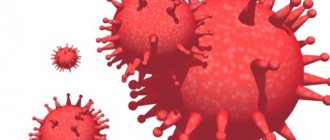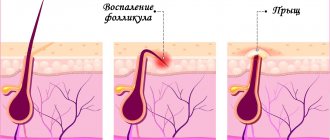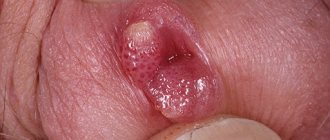Human papillomavirus is one of the most common sexually transmitted infectious diseases. A certain percentage of people live with a virus that does not manifest itself in any way in a latent state, without even knowing about its presence in the body. But in some cases, HPV causes inconvenience. For example, the manifestation of a virus in the form of warts or genital warts on the genitals is perceived as an aesthetic defect. But this is not even the true threat of the disease. At first glance, a harmless papilloma on the genitals can degenerate and take on a malignant form. In this case, the diagnosis is oncology. Is it possible to prevent such risks?
Important: The International Agency for Research on Cancer identifies 1.5 dozen strains of papillomavirus that lead to the development of cancer. The most dangerous (up to 90% of cancer cases) are the 16th and 18th types of the virus.
Specialists at the Lasersvit Mole Diagnostic Center talk about the causes of papillomas on the genitals, the threats and effective methods of combating them. The leading specialized clinic in Kharkov offers services for the diagnosis and treatment of HPV on the genitals. You can make an appointment and consultation with a dermatologist by phone. In the meantime, doctors at the medical institution are answering the most frequently asked questions related to genital HPV.
How does HPV manifest itself on the genitals?
Genital papilloma may look like a small bump, a hair from the epidermis, or a ball on a stalk. This can be a single growth or a group of formations in the intimate area, a flat wart or a large growth similar in shape to cauliflower. What unites them is their location - neoplasms appear in the anorectal area, in the perineum, on the scrotum and directly on the penis in men, on the labia and in the vagina in women.
Important: HPV strains that cause papillomas of the vagina, labia, scrotum and head of the penis rarely provoke the appearance of growths on the oral mucosa. These are papilloma viruses 6, 11, 16, 18, 33, 35 and some other types. Laboratory tests can determine the exact strain of the virus. Well, such a symptom as growths on the inside of the lips and cheeks should be a reason to consult a doctor.
Diagnosis and clinical manifestations
Diagnosis of the disease is carried out through visual examination and laboratory tests of blood, skin, and mucosal tissue samples. As a rule, it is enough for a gynecologist, dermatologist, urologist or other medical specialist to examine the genital area to suspect an infection. After all, as mentioned above, the human papillomavirus on the genitals manifests itself as unsightly growths.
Important: HPV enters the body through microtraumas of the skin and mucous membrane. He can “sleep” for several months and even years. In people with strong immunity, doctors often record self-healing. Well, when the body’s protective functions are weak or under the influence of unfavorable factors, the virus is activated. Genital papillomas appear in men and women.
Clinical manifestations of the pathology are chaotic division of epithelial cells. Many patients complain of discharge and itching. But the main symptom of the disease remains condylomas that grow at the entrance or even inside the vagina in women, in the labia minora, near or inside the anus, around the genitals in men.
To clarify the diagnosis, the doctor may prescribe cytology of cervical tissue samples, PCR testing, and smears for concomitant sexually transmitted infections.
Papillomas on the genitals: causes of pathology development
The most common route of infection is direct contact, in which the skin and mucous membranes of the virus carrier and a healthy person come into contact. As a rule, this is sexual contact. Although there is a risk of infection of the child from the mother, the household method is through personal hygiene items. You can also become infected with HPV in common areas – swimming pools, showers.
Important: With each new sexual partner, the risk of infection for a healthy person increases by 20%. Unfortunately, standard protective equipment used during sexual intercourse does not protect against HPV, since latex products do not protect all parts of the genital organs from contact.
The causes of infection are not as important as methods of combating it. After all, the risk of direct or household infection is very high. The main thing is to start treatment on time to avoid complications. It is noteworthy that Western scientists understand the importance of the problem. Up to 6 billion dollars a year are allocated for HPV research and the development of new treatment protocols in the USA alone. But a medicine that will cure the virus once and for all has not been found. However, today’s methods of combating pathology are quite effective with timely access to a specialized medical institution.
Surgical removal of warts on intimate places
The method of traditional excision of genital warts is used for the following indications:
- Lack of positive effect after other methods of treating genital warts;
- Malignancy of papilloma;
- The presence of large and deeply ingrown neoplasms;
- Impossibility of carrying out other destructive techniques due to objective reasons.
Surgical removal of papillomas involves complete excision of the condyloma under local anesthesia using a scalpel. After the procedure, sutures are placed on the wound, which, if necessary, are removed 10-12 days after the intervention. In order to eliminate all pathologically changed cells during the procedure, quite extensive damage to healthy surrounding tissue occurs, which can lead to bleeding of the postoperative wound. The disadvantages of surgical treatment of genital papilloma include:
- Long and painful rehabilitation period;
- High risk of bacterial infection and inflammation of the postoperative wound;
- Formation of scars and scars.
To relieve pain and reduce the likelihood of postoperative complications, the patient may be prescribed antibacterial and painkillers.
Why are papillomas on the genitals dangerous?
The disease must be treated. This is a strong recommendation from both specialists from the World Health Organization and leading dermatologists-oncologists of Ukraine. In addition to the fact that papilloma on the labia or papilloma on the penis looks extremely unattractive, the disease, as mentioned above, is also dangerous.
Let's start small. When wearing tight underwear, during hygiene procedures, or during intimate caresses, the growth can be injured. And this is fraught with bleeding and secondary infection.
Important: The intimate area takes on an ugly appearance. This may cause disgust on the part of the sexual partner. Without treatment of the pathology, the area where the growths are located may increase. New areas of skin are gradually involved. The formations grow, over time they can interfere with urination and defecation.
If the outcome is unfavorable, HPV in the vagina and on the penis can take on a malignant form. A benign condyloma yesterday can become an oncological tumor with metastasis to the pelvic organs tomorrow. That is why you should not ignore the problem.
Important: Aggressive types of HPV cause cervical cancer, cancer of the small lips, vagina, penis and anus.
Removal of papillomas in intimate areas using electrocoagulation
Electrocoagulation of genital warts involves applying electric current to pathologically altered tissues of the neoplasm. Through various electrodes, microcurrent is directed to the papilloma, which leads to the destruction and further death of pathological cells. Cauterization of condylomas by electrocoagulation is a rather painful procedure, so it is performed using anesthesia. Treatment of genital warts with an electric charge is most effective when combating fresh tumors. Electrocoagulation of deeply ingrown condylomas can lead to re-formation of the growth, which is due to incomplete excision of the wart.
How to get rid of genital papillomas?
Despite the scale of research and understanding of the problem by the medical scientific community, it has not been possible to develop specific drugs for the treatment of HPV, as already mentioned. Some countries offer vaccination against the virus at an early age. However, high positive results cannot be achieved with this measure. After all, the vaccine is effective for a fairly short time, but the risk of infection is present throughout life.
Important: The HPV vaccine can only protect up to a certain point. For example, young people who have not reached puberty and have no history of sexual contact are offered to use this type of protection against the virus. After all, it is during adolescence, when the first sexual experience is acquired, that the greatest change of sexual partners is noted, weakened immunity is diagnosed, and infection most often occurs.
But if you couldn’t protect yourself from the virus, you can fight it. An integrated approach to treatment includes:
- measures to strengthen the immune system, because the body’s internal defenses can suppress the activity of the virus;
- taking antiviral drugs that chemically inhibit the spread of the virus;
- removal of papillomas on the genitals, oral cavity and other parts of the body.
Important: If HPV is detected in one partner in a couple, treatment is carried out on both of them, because the risk that both are infected is more than 80%. An adequate, gentle treatment program is developed for an individual patient or couple, taking into account the manifestations of the disease and the type of virus identified through laboratory tests.
There is a chance of self-healing, but it is quite low. And not in a couple where there will be constant relapses. At the same time, a well-chosen treatment tactic by a doctor allows you to get rid of the pathology quite quickly.
Important: It is strictly not recommended to remove papillomas at home, since the use of aggressive media based on vinegar and iodine is dangerous to health. An extensive tissue burn may form at the site of exposure. In this case, self-medication will not bring the desired result. After all, the skin tumor must be removed completely “at the root.” Only in this case it will not grow again.
Do not try to remove warts at home or in a beauty salon. Such treatment does not provide a complete picture of a person’s health status. The type of virus is not determined, and antiviral therapy is not carried out. This means that the symptoms are only muted, and the problem gets worse.
Medical methods for treating genital and other types of papillomas are:
- Radio wave method.
- Laser method.
- Use of liquid nitrogen.
The best of them today is burning out tumors with a laser. A safe, bloodless and painless method has virtually no contraindications. One or two warts are removed in 5 minutes. Hospitalization of the patient is not required, as the procedure is performed on an outpatient basis. Immediately after micro-surgery, a person can return to his usual lifestyle.
The laser burns out pathological tissue completely and without a trace. There are no scars or scars left on the skin. Papilloma on the genitals or in the perineum is removed forever. It is enough to look at the photos of the skin before and after the procedure to be convinced of this.
You can learn more about laser removal of warts at the Lasersvit clinic at your appointment. You can sign up for a consultation right now at a time convenient for you.
How are papillomas on the genitals in men removed?
Many men are embarrassed by warts on the penis and try to remove them at home using various aggressive media. This is a harmful practice that carries a high risk of complications. A secondary infection may be added to a skin burn. In this case, the treatment will be long. At the same time, it is not difficult to get rid of penile HPV if you go to a specialized medical institution.
Our clinic employs qualified dermatologists who clearly know how to treat papillomavirus on the penis. Rest assured, in a fairly short period of time there will be no trace of the pathology left.
We use a laser method that allows us to target the overgrown tissue of the epidermis. Adjacent tissues are not damaged. And since the capillaries are immediately cauterized, no bleeding occurs.
How are papillomas on the genitals of women removed?
Due to the structural features of the female genital organs, removal of papillomas in women is somewhat more difficult. The papillomavirus on the genitals of women often spreads not only to the external genitalia, but also to the vagina and cervix. Therefore, the removal of warts after a thorough examination, taking tissue samples, in case of external manifestations is carried out by a dermatologist, and in case of internal manifestations, it is carried out by a gynecologist. Any independent attempts to get rid of papillomas are unacceptable and dangerous.
Treatment methods
When unpleasant neoplasms appear on the skin, almost everyone is interested in the question of how to treat papillomas in intimate places. It is important to know that effective removal of growths is possible only with complex therapy, including the use of local agents that help eliminate external manifestations of infection, as well as immunomodulatory and antiviral drugs that help suppress the activity of pathogenic flora.
It is strictly not recommended to remove growths on your own, without first consulting a specialist.
Self-medication of intimate tumors is associated with the risk of bleeding, infections, and a number of other problems. Additionally, home remedies may not be effective.











